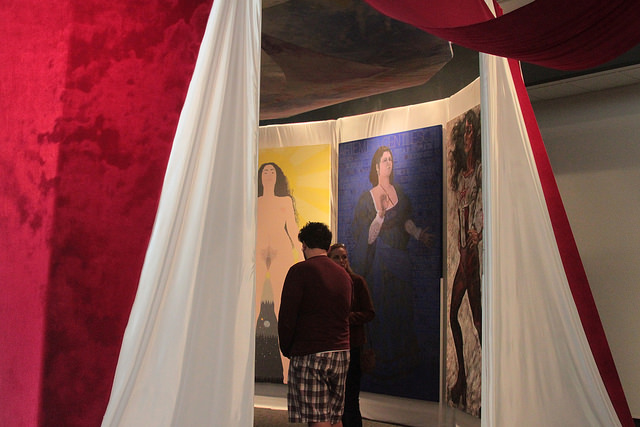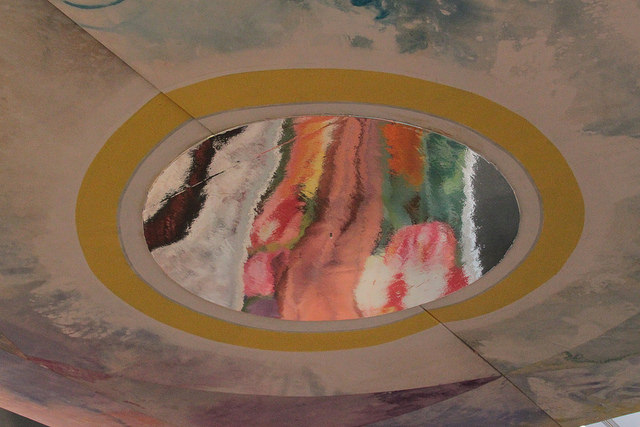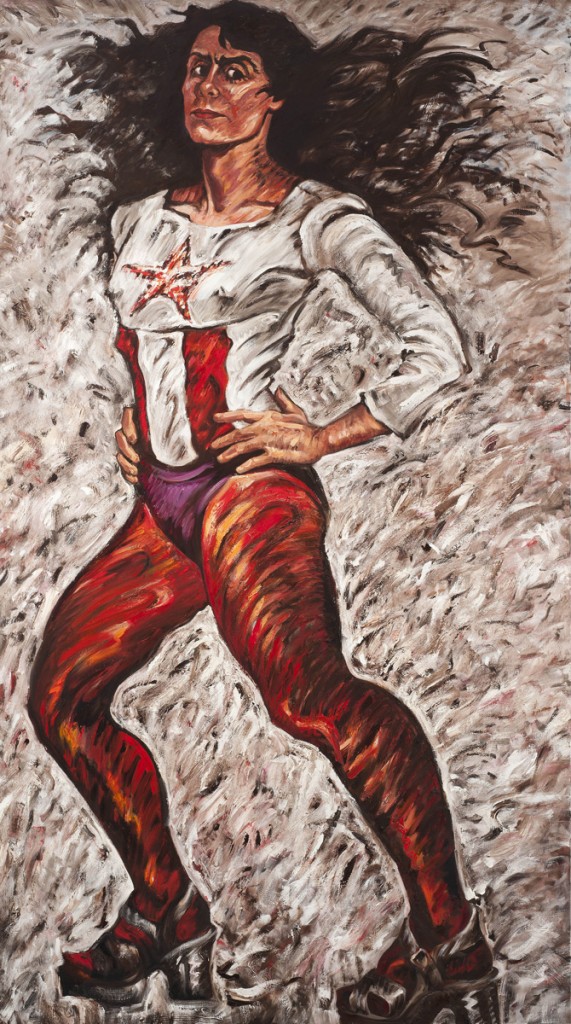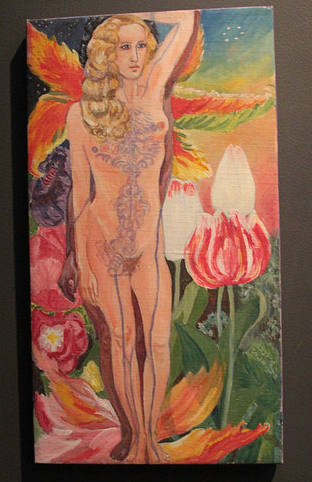An Essential Feminist Collaboration On View at Rowan University Art Gallery

History is funny. Its stories can feel dated and inconsequential, as though those occurrences, regardless of their significance in their time, no longer have anything of importance to share with us. Or history can seem vital, like something that brings to life people and events that happened in the past, but are still relevant in the here and now.
The latter is certainly the case with “The Sister Chapel: An Essential Feminist Collaboration,” an exhibition on view now through June 30 at Rowan University Art Gallery West.
The installation was conceived of by artist Ilise Greenstein in 1974 and first exhibited in 1978. Using an intentional pun on Michelangelo’s famous Sistine Chapel ceiling, “The Sister Chapel” presents a feminist challenge to what Greenstein considered a male-centered view of history.
The wall text in the exhibition explains the overall concept perfectly.
“In its final form, the installation consisted of Greenstein’s 18-foot abstract ceiling suspended above a circular arrangement of 11 9-foot canvases, each depicting the standing figure of a heroic woman. The choice of subject was left entirely to the creator of each work. As a result, the paintings form a visually cohesive group without diminishing the individuality of the artists.”
On a recent visit to the gallery, I had the good fortune to meet Andrew Hottle, Professor of Art History at Rowan, whose exploration illuminated the story of this unique body of work and was the catalyst for the exhibition.
“’The Sister Chapel’ came to Rowan University Art Gallery as a direct result of my research for a book, ‘The Power of Feminist Art,’” Hottle told me.
“In the 70s, interest was shifting towards feminist art,” he said. “Women were drawing attention to the breadth and depth of expression. They absolutely blew open the art scene.
“It was a moment.”
And yet, no one wrote about it.
“Initially, the primary focus of my research was to locate the artists and their work, and find color photos for the book,” he said.
But, it wasn’t long before Hottle came to understand the need to broaden his vision.
“I recognized how important it was for the ‘The Sister Chapel’to be preserved, and that it would likely require more than writing a book to accomplish that.”
And, because works of art are never effectively represented in photographs, Hottle decided to take a different path.
“I became acutely aware of the need to exhibit ‘The Sister Chapel’anew,” he said.
With the goal of gathering the individual paintings in one location and keeping them together in the future, Hottle began to ask the artists if they would consider donating their pieces to the university.
“After I got several very encouraging responses,” Hottle said, “I made further inquiries.”
Mary Salvante, Gallery Director at Rowan Art Gallery, fills in additional details.
What spurred Hottle’s research 10 years ago, Salvante said, was his impression that these works were under-recognized and not widely known. And what moved the project forward was his ongoing belief in the importance of bringing the paintings back together.
“These paintings were done to be part of this installation,” said Salvante. “And while each is complete in its own right, they lose some of their meaning when they are shown out of context.
“The paintings need to be with their sisters,” she said.
Aside from being the first time in more than 30 years that the works have been shown as intended, what makes the “The Sister Chapel”at Rowan Art Gallery especially noteworthy is the enclosure in which the paintings are installed.
“The original concept was to display the paintings inside a chapel-like tent,” said Salvante. And, although detailed designs were made in the ‘70s by conceptual artist Maureen Conner, the tent was never constructed as part of the installation until now.
It took the proverbial village to make the whole thing come together, Salvante told me.
“There were a lot of people involved in this project,” she said.
Salvante told me that Jim Greenwell, a sculptor and Rowan studio technician, developed the system to hang the mirrored ceiling painting and the stands that attach the paintings to the ceiling. And Salvante, together with Pat Ahearn, a Rowan professor who does set design, came up with the modular system for hanging the large canvases. “Each niche is an independent piece, with a fabric piece that goes over it like a slipcover.
“This design makes the entire thing easy to install, to store, and to pack when it needs to be moved,” said Salvante.

And the packing and moving part is important because both Hottle and Salvante say that taking “The Sister Chapel”on the road is definitely one of their objectives.
“We hope that other institutions may be interested in borrowing it for short-term exhibitions,” Hottle said. “And ideally, it will find a permanent home on the university campus, where students and the public can experience it.”
Salvante agrees. “It’s important to be able to show this work,” she said, “and to demonstrate a unique collaboration at a time when artists weren’t doing a lot of that.
“The installation also provides a glimpse into what women artists were doing and what was happening in the ‘70s.”
Salvante believes that this exhibit comes at the right time. “Many of the issues that women artists were dealing with are still a part of the culture today,” she said, “which is one of the reasons that this resonates with people.
“That is what makes it feel current.”
Rowan University Art Gallery West at Westby Hall presents "The Sister Chapel: An Essential Feminist Collaboration" March 28 - June 30, 2016. Admission to gallery events are always free and open to the public. The Gallery West will be open by appointment only beginning May 9th. Please call 856-256-4521 to schedule an appointment.
ArtistArtwork: June Blum (Betty Friedan), Martha Edelheit (Womanhero), Elsa M. Goldsmith (Joan of Arc), Shirley Gorelick (Frida Kahlo), Betty Holliday (Marianne Moore, American poet), Diana Kurz (Durga, Hindu goddess), Cynthia Mailman (God, a female manifestation), Alice Neel (Bella Abzug, The Candidate), Sylvia Sleigh (Lilith, first wife of Adam), May Stevens (Artemisia Gentileschi, 17th century Italian artist), Sharon Wybrants (Self-Portrait as Superwoman), Ilise Greenstein (Ceiling), Maureen Connor (Chapel covering).




